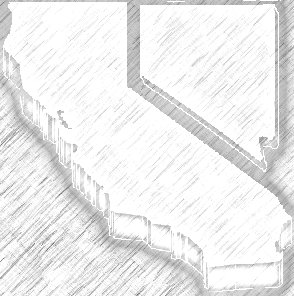 In Nevada, if you sustain injuries as a result of the negligence of a driver who has insufficient insurance to compensate you for all of your damages, then you can make a claim for under-insured motorist (UIM) benefits on your own policy.
In Nevada, if you sustain injuries as a result of the negligence of a driver who has insufficient insurance to compensate you for all of your damages, then you can make a claim for under-insured motorist (UIM) benefits on your own policy.
In Nevada, the applicability of UIM benefits is determined by the underlying policy of the adverse driver. Your UIM policy is designed to compensate you for your damages that exceed the adverse driver’s policy, up to the additional limits of your own policy; thus if the adverse driver maintained a $50,000 liability policy, and you have a $30,000 UIM policy, your UIM policy will pay for all damages in excess of $50,000, up to an additional $30,000 — so that as a claimant you can recover up to $80,000.
In contrast, in California, your UIM policy will pay only until you recover your policy limits. So, in the above-example, your insurance company will pay UIM benefits only to the extent that you would recover $30,000 total. Since the adverse driver’s $50,000 policy exceeds your $30,000 UIM policy, your UIM policy would never even be triggered. On the other hand, if the example policies were reversed in California ($30,000 adverse liability limits, and $50,000 UIM limits) your UIM would pay for all damages in excess of $30,000 up to an additional $20,000 — so that, at most, you could recover $50,000.
Nevada law specifically prohibits UIM policies from invoking this “California” model, and, instead, requires stacking of UIM benefits on top of third party liability benefits. NRS 687B.145(2) provides:
Except as otherwise provided in subsection 5, insurance companies transacting motor vehicle insurance in this State must offer, on a form approved by the Commissioner, uninsured and underinsured vehicle coverage in an amount equal to the limits of coverage for bodily injury sold to an insured under a policy of insurance covering the use of a passenger car. The insurer is not required to reoffer the coverage to the insured in any replacement, reinstatement, substitute or amended policy, but the insured may purchase the coverage by requesting it in writing from the insurer. Each renewal must include a copy of the form offering such coverage. Uninsured and underinsured vehicle coverage must include a provision which enables the insured to recover up to the limits of the insured’s own coverage any amount of damages for bodily injury from the insured’s insurer which the insured is legally entitled to recover from the owner or operator of the other vehicle to the extent that those damages exceed the limits of the coverage for bodily injury carried by that owner or operator. If an insured suffers actual damages subject to the limitation of liability provided pursuant to NRS 41.035, underinsured vehicle coverage must include a provision which enables the insured to recover up to the limits of the insured’s own coverage any amount of damages for bodily injury from the insured’s insurer for the actual damages suffered by the insured that exceed that limitation of liability.
That is, Nevada law expressly requires “excess-type” UIM coverage and prohibits “reduction-type” UIM coverage. Often times insurance adjusters are based out of California, and are not aware of the applicable Nevada law.
It is imperative that you hire attorneys, like those at Yan Kenyon, who understand the critical nuances of insurance coverage to handle your case — to ensure that you are able to recover all avenues of compensation. Further, all of the attorneys at Yan Kenyon are licensed in both California and Nevada. Call today for your free initial consultation. Yan Kenyon takes UIM cases on contingency fee basis, which means they will not get paid unless you do.
I also want to give a special thanks to Brian Worthington for his constant insight into insurance intricacies, and his constant willingness to discuss cases.
-Jay
Jay Kenyon is a founding partner of Yan Kenyon, and his work consists exclusively of personal injury claims and litigation.
